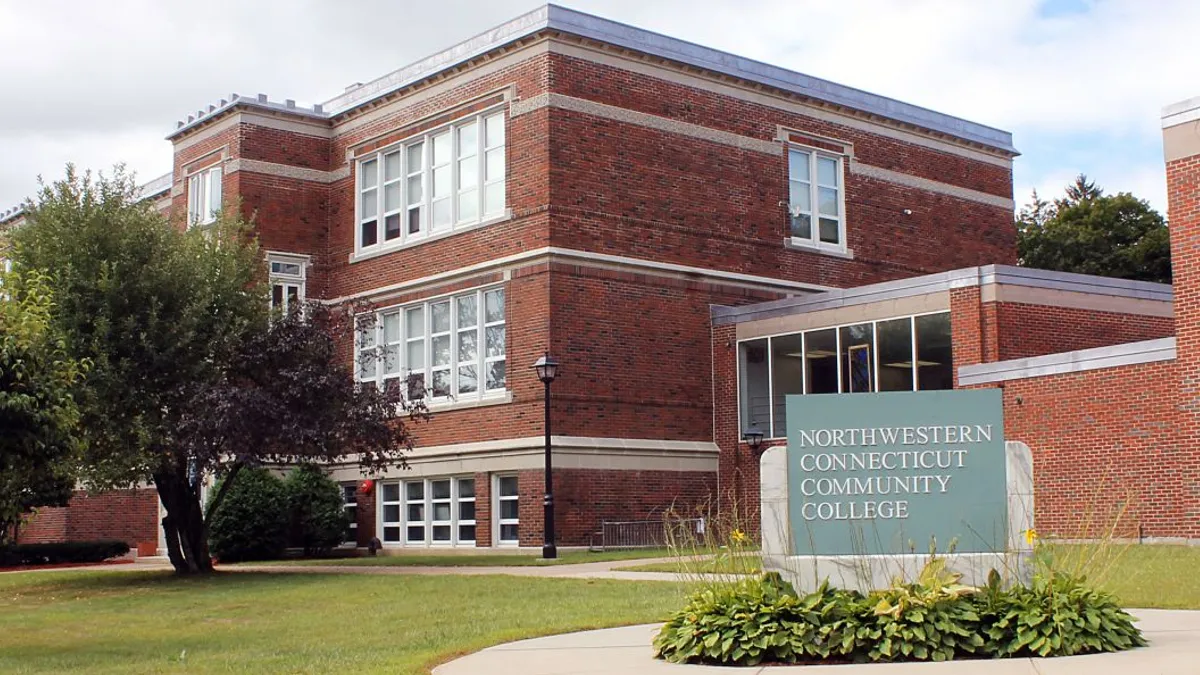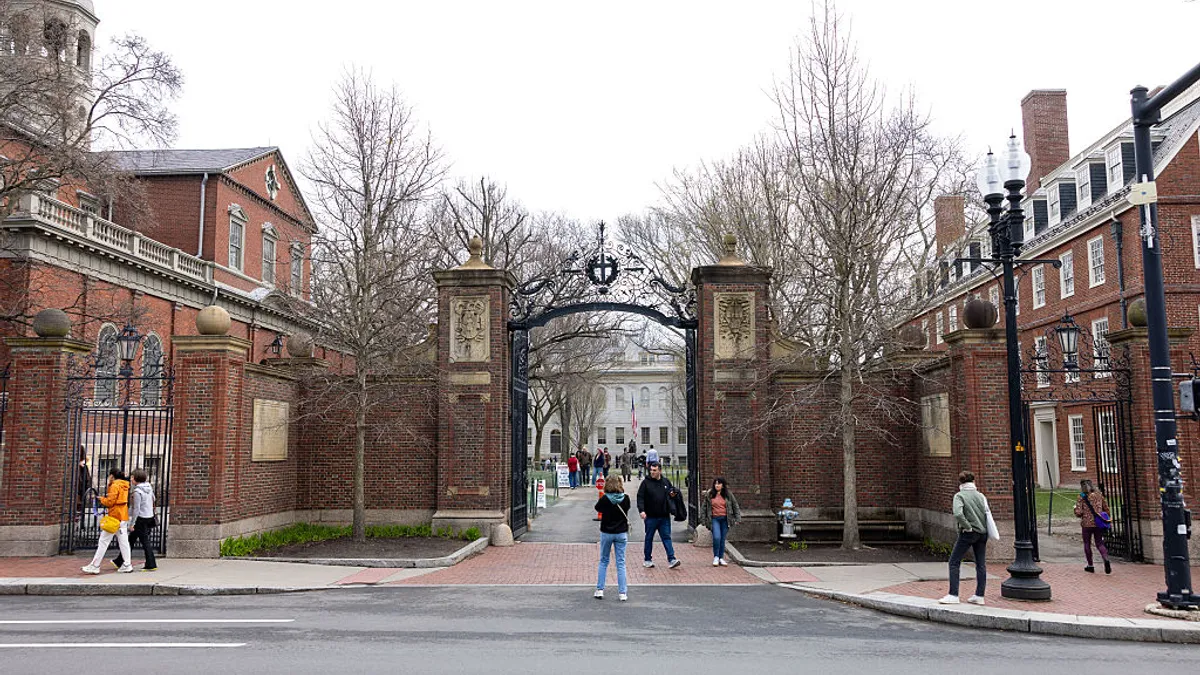Regional colleges have long played the role of community economic engines. For many students, the educational experience they offer is more aligned with the needs and opportunities in the local workforce than is that of their state's flagship institution.
But post-recession economic headwinds have worked against these smaller, less-resourced institutions. Many are facing financial pressures driven by declining budgets and changing demographics that are forcing a reorganization of higher education across the country. And although such moves can be controversial and take years to implement, experts say the trend is only expected to continue.
"With a shrinking student body and a public sector that no longer sees higher education as something they should support access to in every city, we're in a period where it would be pretty amazing if there weren't contractions going on," said Virginia Sapiro, a political science professor at Boston University who is writing a book on the history of U.S. higher education.
'This is the bust'
More than two dozen nonprofit colleges and universities have closed or consolidated since 2015, according to Sapiro's research. That number doubles when taking into account schools that have announced plans to consolidate or are in the process of doing so. More may be ahead. For about 800 institutions today, their small size or general inefficiencies have raised critical strategic challenges, according to a 2016 report from Ernst & Young's education consulting practice, Parthenon.
Enrollment is shrinking at many schools, with the biggest declines in colleges with fewer than 1,000 students. Since 2010, their enrollment has fallen faster — by more than 5%, according to Parthenon. Lower birth rates over the past two decades are mainly to blame.
Funding cuts during the Great Recession have also played a significant role. On the whole, state support for higher education is nearly $7 billion short of what it was in 2008, according to Michael Mitchell, senior policy analyst at the Center on Budget and Policy Priorities (CBPP). Tuition has gone up as a result, but it doesn't come close to filling the gap.
The funding drop disproportionately affects regional two- and four-year colleges, which rely more on state dollars than larger institutions — in some cases for more than half their annual revenue — and aren't as readily able to discount tuition as larger public or private colleges.
From an economic standpoint, Sapiro said, merging two or more institutions is common sense. "We've had a 50-year period of massive expansion of the number of students thanks to baby boomers, plus an expansion in public sector financing," she said. "That was the boom; this is the bust."
Making a merger
College mergers are politically gargantuan efforts, with students, faculty and even lawmakers often questioning whether the system is accurately portraying the financial case and suggesting cuts could come from elsewhere. Students also raise concerns over preserving a college's identity and maintaining access to programs at their local campus.
In Connecticut, the State Colleges and Universities (CSCU) system faces a roughly $27 million budget deficit and a 10-year low in enrollment. The planned merger of its 12 community colleges by 2023 would wipe out almost the entire budget gap, but it has faced extreme political resistance. Earlier this year, faculty and some members of the state legislature backed a bill that could have stopped the consolidation.
Many are upset that the president and board of regents decided on the merger even after the system's accrediting agency rejected the idea last year. But CSCU Chief of Staff Alice Pritchard argues that the budget woes have already made the system's accreditation renewal a concern. The board also put forth a plan that calls for expanding supports for students and focusing the job and funding cuts on back-office staff. Approximately 170 positions will be eliminated, mostly in human resources and information technology. But that has done little to appease opponents.
"We thought that by not touching classrooms and learning, we'd get some bonus points," Pritchard said. "We got none whatsoever."
Even handling the more routine mechanics of a consolidation can be tricky. Every detail, from renaming campus branches to deciding how to align and standardize classes, must be considered. Communication is key at this stage, said CBPP's Mitchell.
Schools need to help students understand how a merger will impact their academic experience, he said, from whether their credit hours are affected to where they need to go for class. "Those questions are really important, and I think the schools sometimes get so wrapped up internally with the process, they fail in communicating," he said.
Playing the long game
More than 1,000 miles away, the University of Wisconsin System is in the middle of that process. Its merger of 13 two-year campuses with seven four-year colleges is underway after winning approval in 2018 from its accreditor, the Higher Learning Commission. The first year was devoted to transitioning operations, administrative oversight and academic programs from the two-year to the four-year institutions.
But the work is far from over, university spokesperson Mark Pitsch said in an email. The receiving institutions are now focusing on long-term planning to achieve the restructuring goals, including expanding educational opportunities.
"Meeting these goals will take more than the two years allotted to complete the transfer of administrative oversight, but the foundation has been built, and we are already seeing new programs and collaborations being developed," he said.
It's in these decisions that CSCU's Pritchard believes a merger can expand access to quality higher education programs beyond students' local campuses. "We're breaking down geographies and the privileges that come along with that," she said.
"We thought that by not touching classrooms and learning, we'd get some bonus points. We got none whatsoever."

Alice Pritchard
Connecticut State Colleges and Universities, Chief of staff
The experience at the University System of Georgia, which has completed nine college consolidations over the past eight years, is promising. Its process is meant to improve student outcomes and provide better service, not necessarily save money. So far, the plan is working. As one example, Georgia Perimeter College, which merged with its Atlanta-area neighbor Georgia State University in 2016, increased its graduation rate from 6.5% in 2014 to nearly 15% in 2018.
Georgia can be a model for other states as demographic and revenue pressures persist, Moody's Investors Service pointed out in an August report.
"The potential need and drivers will continue to build," said Dennis Gephardt, a higher education analyst at Moody's. "The political ability to execute will be mixed, but the pressures will be there … and other states appear to be making a run for it."






















